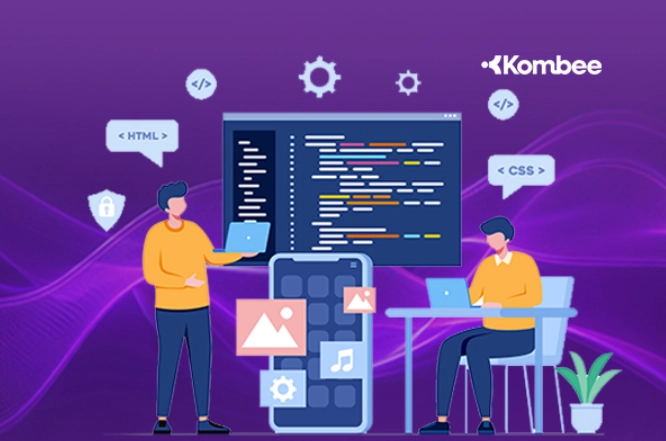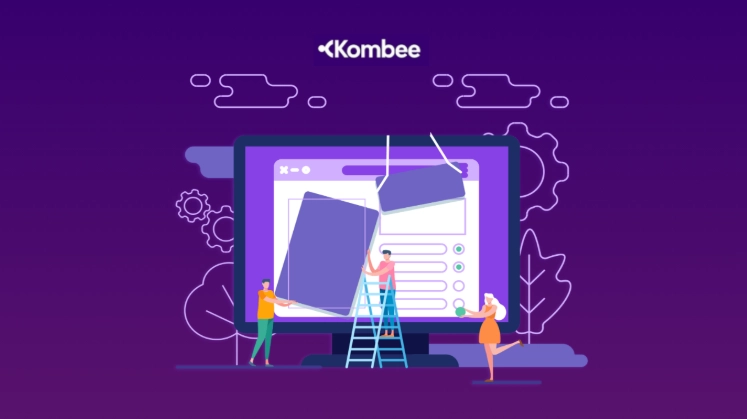Introduction
Ever wondered why a web or mobile app succeeds? Why some apps deliver the best experiences while others fall behind with slow performance and security issues? The reason usually lies in one single aspect: the right group of developers. In fact, 68% of software projects fail because team capabilities and processes are not aligned.
When building secure, high-performance and scalable applications whom you work with is as important as what technology you use.
In this blog, let us talk about what makes a great software development team and how to build the perfect team for your next breakthrough project.
What Makes a Web and Mobile App Strong
Creating a web and mobile app that functions is not coding. It is creating an app that executes as smooth, quick and safe on every platform. Here's the secret to having your app stand the test of time.
1. Speed That Speaks for Itself
No one likes waiting. On a browser or on a mobile, your app has to load in the blink of an eye. With techniques like code splitting, lazy loading and image optimization, users aren't left waiting for their fingers to tap. And in a mobile app, frameworks like Flutter and React Native make sure that performance isn't flat no matter what device.
2. Built to Grow
You don't need an app for today alone. You need an app that expands as quickly as your business. Microservices, serverless architecture and cloud technologies enable your app to grow more and more users and endless new features without missing a beat.
3. Locked and Loaded Security
Security is not optional but mandatory. If you are working with financial data or user data, robust authentication and even encryption are a must. With GDPR and HIPAA and other industry standard security in place you keep user data safe and your app along the way.
4. UX That Brings Them Back
Good design has nothing to do with appearance. It is about keeping the app simple, intuitive and enjoyable as well. Your developer team needs to make sure that the app experience is seamless on all devices. Delighting the users is not a goal but an assurance by responsive design to instant response.
Also Read: What’s the Difference Between a Website and a Mobile App?
Building the Perfect Development Team for Web and Mobile Applications
And so how do you construct the right dedicated development team to deliver on all this? A high-performing team is proficient in frontend and backend technology, security best practices and agile development.
Below is a list of main positions:
- Product Owner / Business Analyst: The visionary who keeps development work anchored to business goals and user requirements.
- Project Manager / Scrum Master: The agile evangelist who keeps on track timelines, risk and collaboration.
- UI/UX Designers: They create wireframes and also prototypes and make your web and mobile apps operational as well as beautiful.
- Frontend and Backend Developers: The developers deploy your app using frameworks like React, Angular, Swift or Kotlin for web and mobile app deployment.
- QA Engineers: Ensure everything works just right with manual as well as automated testing on platforms.
- DevOps Engineers: Help manage the deployment, automation and monitoring of your app for smooth delivery.
- Security Engineers: Govern safe coding standards, conduct vulnerability assessment and adhere to standards compliance.
Need help building a skilled, reliable development team? We at Kombee can assemble a custom team tailored to your app’s goals.
Selecting the Most Suitable Development Process for Web and Mobile Apps
There is no specific process in the case of web and software development. The process depends on your needs. Following is how you can choose the best way:
Custom Development
This is ideal when you need a completely custom solution. For enterprise-level security and performance then custom development gives maximum control of features and architecture.
Low-Code/No-Code
For low-end applications or internal company tools, low-code or no-code solutions offer rapid development with little coding. This is ideal for MVPs or applications with universal workflows.
Hybrid Models
Merge the two worlds by combining them with hybrid models. For instance, the use of custom development for important functionality and the use of low-code in less complicated elements of the app will speed up delivery.
Step-by-Step Development Process to Build Robust Web and Mobile Apps
A good web and mobile application should incorporate a seamless process end to end. Following is an overview of the main phases:
1. Discovery & Planning
- Gather requirements from stakeholders.
- Assess business and technical risks.
- Feature planning and budget/timeline estimate.
2. Design & Architecture
- Design wireframes and user flows.
- Choose scalable architectures (e.g., serverless, microservices).
- Specify technology stack.
3. Development
- Embrace Agile sprint cycles and test-driven development.
- Conduct code reviews and code quality.
4. Testing
- Conduct functional, security and performance testing.
- Conduct User Acceptance Testing (UAT).
5. Deployment
- Use CI/CD for seamless, automated deployments.
- Deploy with zero downtime, monitor closely.
6. Maintenance & Iteration
- Track app health and release updates.
- Collect feedback and continue iterating based on user analytics.
From planning to deployment, Kombee supports every phase of app development with proven processes and expert teams.
Common Web and Mobile App Development Challenges
Building good web and mobile apps has challenges of its own. Below is an overview of the most common issues development teams face:
- Scope Creep: Because project requirements are ever-changing, it is difficult to maintain focus, thus leading to late timelines and cost overruns.
- Platform Compatibility: Getting the app to work well on different devices, screen resolutions and operating systems can be a developer's nightmare.
- Performance Issues: Applications tend to suffer from performance issues of slow data loading, crashing or slow execution especially as the user base expands.
- Security Risks: Because sensitive information is being processed, the risk of data breach or vulnerability in the app is a major challenge for any dedicated development team.
- User Adoption: No matter how well-an app is developed, it won't garner any success if users don't find it intuitive or engaging and thus have low retention rates.
Read More: AI's Role in Mobile App Development: Trends and Future Insights
Measuring Success for Web and Mobile Apps

Success isn't merely in going live with an app, but in continuous improvement. Some of the most important KPIs to look out for are as follows.
Conclusion
Whether building a high-performance, scalable app or rolling out a bare-bones MVP the number one most critical factor for success is the dev team you bring on board. Web and software development is complex and needs effective planning and effective communication and a proper technology stack.
Are you creating the right team for your next hit app? That is where experienced planning comes into the picture. With Kombee we help you plan, develop and also scale your app so that you can meet your business goals. Whether you're starting from scratch or growing, contact Kombee today to build an app that performs, is secure and future-proof.
Frequently Asked Questions
1. How do I choose the right development team for my app project?
Look for a team with relevant experience, strong technical skills, clear communication, and a proven track record in delivering similar projects on time and within budget.
2. What roles are essential in a strong app development team?
Key roles include a project manager, UX/UI designer, front-end and back-end developers, QA tester, and possibly DevOps and security specialists for robust performance and deployment.
3. How does the team's experience impact app performance and scalability?
Experienced teams build cleaner, more efficient code, anticipate challenges, and design scalable architectures ensuring better performance, fewer bugs, and easier future updates or expansion.






